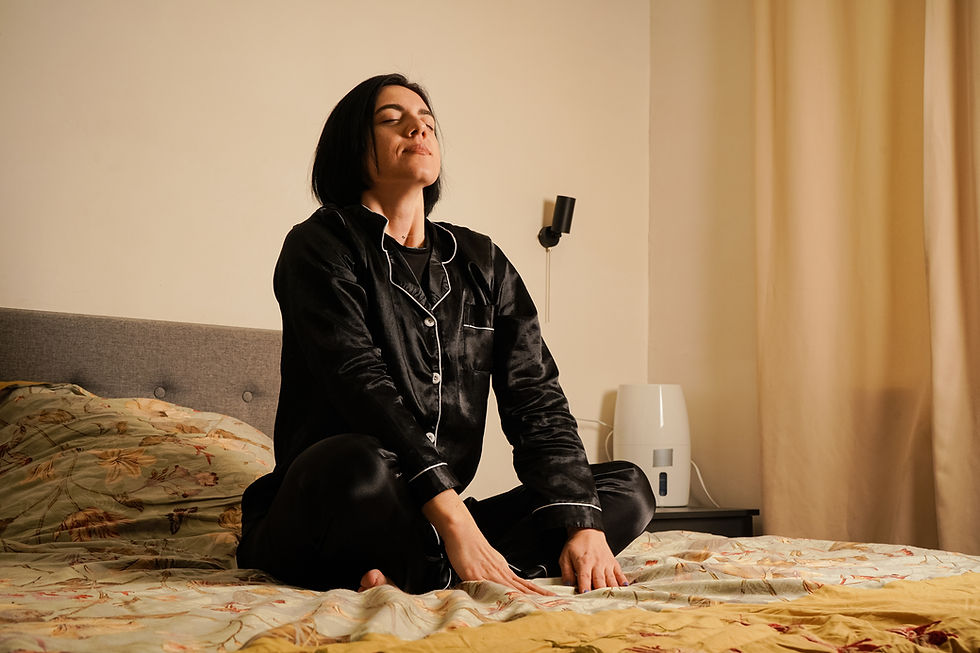Break the Stress Cycle: Cortisol Tips for Women Over 40
- Mindy G.
- Aug 25
- 3 min read
Let’s face it — life doesn’t slow down after 40.
Between work, aging parents, busy family schedules, and hormonal shifts, many women in midlife are running on stress… and caffeine.
But chronic stress isn’t just an emotional burden — it can physically hold you back, especially when it comes to weight loss, energy, sleep, and mood.
At the center of this stress storm? Cortisol — your body’s primary stress hormone.

Why Cortisol Matters More After 40
When your brain perceives stress (physical, emotional, or even dietary), it signals your adrenal glands to release cortisol. This is a good thing in short bursts — it helps you stay alert and handle challenges.
But when cortisol stays elevated all the time, especially during menopause and perimenopause, it can lead to:
Stubborn belly fat (yes, cortisol loves to store it there)
Disrupted sleep
Sugar cravings and energy crashes
Increased anxiety or irritability
Hormonal imbalance
Slower recovery from workouts
The good news? You can lower cortisol naturally by making small, manageable changes to your daily routine — starting today.
5 Simple Ways to Reduce Stress and Lower Cortisol

1. Focus on Deep, Slow Breathing
This sounds basic — but it's powerful. Deep breathing signals to your nervous system that you're safe, helping bring cortisol back down.
Try this:
Inhale for 4 seconds
Hold for 4 seconds
Exhale slowly for 6–8 seconds
Do this for 2–3 minutes when you feel overwhelmed.

2. Get Outside — Daily
Natural light, fresh air, and movement work together to reduce stress hormones.
Even just 10–15 minutes outside can improve your mood and lower cortisol levels. Bonus points if you walk, stretch, or leave your phone behind.

3. Balance Your Blood Sugar
Skipping meals, under-eating, or running on sugar and caffeine spikes cortisol.
Focus on:
Protein at every meal
Healthy fats (avocado, nuts, olive oil)
Fiber-rich carbs (veggies, fruits, whole grains)
This helps your body feel safe, satisfied, and stable — which reduces the need for stress hormones.

4. Prioritize Sleep (and Rest)
Lack of sleep keeps cortisol high — and cortisol makes it harder to sleep.
To break the cycle:
Stick to a consistent bedtime
Limit screens at least 30 minutes before bed
Try gentle stretching or journaling to wind down
Rest isn’t just sleep — it’s also giving yourself permission to pause during the day.

5. Say No More Often
Chronic stress often comes from overcommitment. Give yourself permission to say no to things that drain you. Protect your energy like it matters — because it does.
When you reduce external pressure, your internal stress levels can finally start to come down too.
How to Break the Stress Cycle for Good
The stress cycle becomes a loop when cortisol stays elevated and your nervous system stays on high alert. The key to breaking it isn’t perfection — it’s consistency with small, calming habits.
Move your body regularly (but not excessively)
Eat in a way that supports your hormones
Build in moments of rest — even 5 minutes helps
Breathe deeply before reacting or deciding
Ask for help or talk it out (you don’t have to do it alone)

You Deserve to Feel Good in Your Body
Stress isn’t something you just “push through.” It’s something you can learn to manage — and even heal from — with intention, self-compassion, and support.
When you care for your body in midlife, it starts to work with you instead of against you. Lowering cortisol is one of the best places to start.
Need help building a realistic wellness routine that fits your life and your hormones?
Let’s talk — I help women in menopause create sustainable habits that feel good and actually work. Click the image below to book a free Fat Loss in Midlife Call with me and let's create simple, realistic and doable plan that works your life and your goals.





Comments